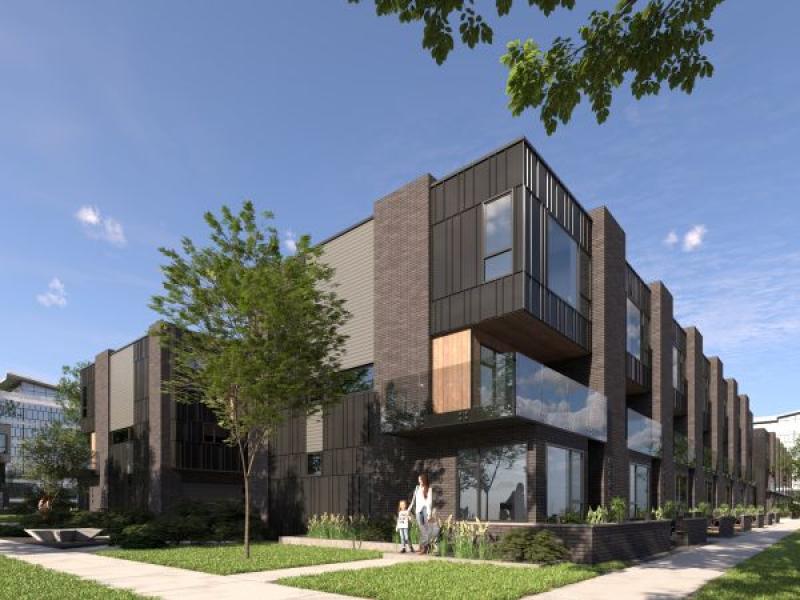
Home insurance rates across Canada in January rose 7.66 per cent year-over-year, fuelled by extreme weather damages, elevated claims costs and rising repair and replacement prices, according to data from insurance comparison site My Choice Financial.
Saskatchewan, Manitoba and Alberta saw the highest year-over-year average province-wide increases at 12.16 per cent, 11.31 per cent and 9.25 per cent, respectively. P.E.I. had the smallest provincial rise at 0.88 per cent.
“Home insurance inflation is still pretty high in Canada across the board, considering that inflation overall is sort of tamed,” Vitalii Starov, vice president of growth at Toronto-based My Choice, told RENX Homes.
The escalating home insurance rates correlate with a notable increase in the frequency and severity of climate-related events such as wildfires and floods, the My Choice information states. Based on data from the Insurance Bureau of Canada, severe weather conditions in 2023 caused over $3.1 billion in insured damage across Canada.
Even with expectations for interest rates to fall back into the two per cent range, the firm warned to prepare for home insurance prices to continue to climb in 2024.
Surging home insurance across the country
In addition to the larger Western Canada increases, Ontario saw a 6.32 per cent year-over-year increase, with Quebec at an 8.02 per cent and British Columbia at 7.63 per cent.
P.E.I. was joined by New Brunswick as having a comparatively small increase at 2.39 per cent. Regional neighbours Nova Scotia and Newfoundland and Labrador were more in line with the national average at 8.27 per cent and 6.89 per cent, respectively.
Inflation for replacement costs stood at 4.69 per cent year-over-year nationally. Starov said My Choice explored this data point because “replacement cost is the primary driver of home insurance prices.”
But there was no clear, universal correlation for some provinces, he said. For example, Manitoba’s 11.31 per cent year-over-year increases in home insurance contrasts with a 1.52 per cent deflation of the replacement cost.
Rather, the data shows the challenge of correlating the increase to one particular factor, Starov said.
My Choice put the spotlight on climate-related damages, highlighting a risk that threatens the insurance industry and coverage for people living in areas deemed uninsurable.
The climate problem for insurance
The $3.1 billion in insured damages from weather-related events in 2023 is one of the highest to date in Canada, Starov said. “That’s definitely something worth paying attention to."
Canada is starting to become more like the U.S. with severe weather as a major factor for home insurance costs, he said. Some properties in California and Florida, for example, are being deemed uninsurable, according to CBS News.
Lender Desjardins has also announced it will no longer mortgage some properties on flood plains, a restriction other lenders and insurance firms are likely to follow.
My Choice’s data shows B.C. led the amount of claims at $720 million, with Ontario and Quebec coming in $710 million, Atlantic Canada at $455 million, then Central Canada including Alberta and Saskatchewan at a combined $430 million.
With big insurers like Desjardins refusing to provide home coverage or mortgages in the high-risk flood zones of Quebec, Starov said it is reflective of a new insurance reality in Canada. The country may be resembling the U.S. more, as it too grapples with extreme weather events that are becoming a major factor in home insurance costs, he said.
Mortgage delinquency rates "a little bit concerning"
Another observation My Choice singled out is the financial strain an increase in home insurance rates will put on cities with jumps in mortgage delinquencies. Starov described the finding as “a little bit concerning.”
With many Canadians living paycheque to paycheque, a 7.66 per cent average increase in home insurance could put further pressure on Canadians in cities like Barrie, London, Toronto, Windsor and Victoria, which experienced some of the highest increases in mortgage delinquencies year-over-year.
Looking to the Bank of Canada
Starov said My Choice is hopeful for the financial strain of home insurance inflation to be eased if the Bank of Canada starts decreasing interest rates in the near future.
As My Choice’s data only covers January 2024, Starov said the company will analyze updated data by the end of June to see if there is a trend between home insurance and overall inflation.
Homeowners can adapt to the rising insurance costs by shopping around for more favourable rates, he recommends. Starov also advises to increase the deductible on a policy, and bundle the home insurance with auto insurance to get a discount.
A renovation to replace aging components in a residence - such as wiring - would also bring down premiums.










